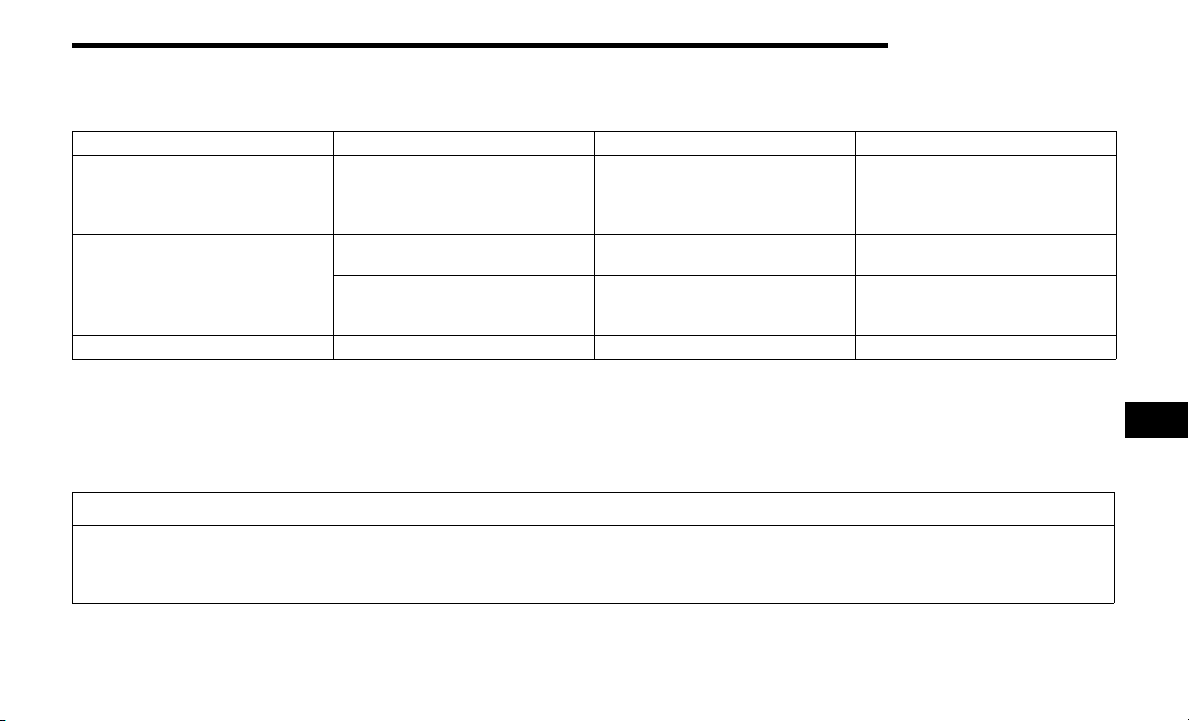Loading ...
Loading ...
Loading ...

IN CASE OF EMERGENCY 221
TOWING A DISABLED VEHICLE
This section describes procedures for towing a disabled vehicle using a commercial towing service.
Proper towing or lifting equipment is required to prevent damage to your vehicle. Use only tow bars and other equipment designed for this purpose, following equipment manufacturer’s
instructions. Use of safety chains is mandatory. Attach a tow bar or other towing device to main structural members of the vehicle, not to fascia/bumpers or associated brackets. State
and local laws regarding vehicles under tow must be observed.
If you must use the accessories (wipers, defrosters, etc.) while being towed, the ignition must be in the ON/RUN mode, not the ACC mode.
If the key fob is unavailable or the vehicle's battery is discharged, find Instructions on shifting the transmission out of PARK
Ú page 218.
Towing Condition Wheels OFF The Ground RWD MODELS AWD MODELS
Flat Tow NONE
If transmission is operable:
Transmission in
NEUTRAL
30 mph (48 km/h)
max speed
30 miles (48 km)
max distance
NOT ALLOWED
Wheel Lift Or Dolly Tow
Front
NOT RECOMMENDED (but, if used, same
limitations as previously mentioned)
NOT ALLOWED
Rear NOT RECOMMENDED
NOT RECOMMENDED, but, if used:
Ignition in ON/RUN mode
Transmission in
NEUTRAL (NOT in PARK)
Flatbed
ALL BEST METHOD BEST METHOD
CAUTION!
Do not use sling type equipment when towing. Vehicle damage may occur.
When securing the vehicle to a flat bed truck, do not attach to front or rear suspension components. Damage to your vehicle may result from improper towing.
FCA US LLC does not recommend towing this vehicle using a tow dolly. Vehicle damage may occur.
7
23_LA_OM_EN_USC_t.book Page 221
Loading ...
Loading ...
Loading ...